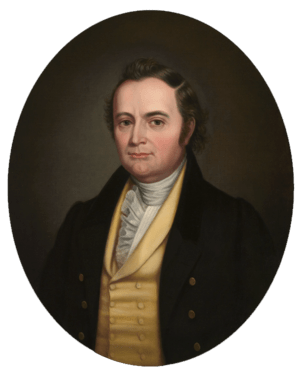John W. Taylor (politician) facts for kids
Quick facts for kids
John W. Taylor
|
|
|---|---|
 |
|
| 9th Speaker of the United States House of Representatives | |
| In office December 5, 1825 – March 4, 1827 |
|
| Preceded by | Henry Clay |
| Succeeded by | Andrew Stevenson |
| In office November 15, 1820 – March 4, 1821 |
|
| Preceded by | Henry Clay |
| Succeeded by | Philip P. Barbour |
| Member of the U.S. House of Representatives from New York |
|
| In office March 4, 1813 – March 3, 1823 |
|
| Preceded by | Thomas R. Gold |
| Succeeded by | Charles A. Foote |
| In office March 4, 1823 – March 3, 1833 |
|
| Preceded by | Thomas H. Hubbard |
| Succeeded by | Joel Turrill |
| Member of the New York Senate from the 5th district |
|
| In office January 1, 1841 – December 31, 1842 |
|
| Preceded by | Samuel Young |
| Succeeded by | Sidney Lawrence |
| Personal details | |
| Born | March 26, 1784 Charlton, New York |
| Died | September 18, 1854 (aged 70) Cleveland, Ohio |
| Political party | Democratic-Republican (before 1825) National Republican (after 1825) |
| Spouse | Jane Hodge Taylor |
| Alma mater | Union College |
| Profession | Law |
John W. Taylor (born March 26, 1784 – died September 18, 1854) was an important American politician from New York in the early 1800s. He made history as the very first Speaker of the House of Representatives from his home state.
Early Life and Education
John W. Taylor was born in 1784 in a town called Charlton, New York. This area was first part of Albany County, New York. Later, it became part of Saratoga County, New York when that county was created.
Taylor received his early education at home. He was a very bright student. In 1803, he graduated from Union College. He was the top student in his class, known as the valedictorian. After college, he studied law. He became a lawyer in 1807 and started his practice in Ballston Spa, New York.
Family Life
In 1806, John W. Taylor married Jane Hodge. She was from Albany, New York. They had eight children together. Jane passed away in 1838.
Political Career
Taylor began his political career in New York State. He was a member of the New York State Assembly in 1812 and again from 1812 to 1813. The Assembly is part of the state's government.
He then moved on to national politics. John W. Taylor served in the United States House of Representatives for 20 years. This was from 1813 to 1833. The House of Representatives is a major part of the U.S. Congress.
Taylor was chosen twice to be the Speaker of the House. This is a very important leadership role. The Speaker leads the discussions and votes in the House. He was first elected Speaker in 1820 and again in 1825.
During his time in Congress, Taylor was involved in important debates. In 1819, he supported the Tallmadge Amendment. This amendment suggested that the Missouri Territory should join the United States as a "free state." This meant it would not allow slavery. This idea passed in the House but not in the Senate.
Taylor was also a strong supporter of the Missouri Compromise in 1820. This was an agreement that tried to balance the number of "free" and "slave" states joining the country. He spoke out against lawmakers who thought slavery was necessary.
Later Years
After leaving Congress in 1833, Taylor went back to being a lawyer. He continued his law practice in Ballston Spa.
He also served in the New York State Senate. This is another part of the state government. He was a state senator in 1841 and 1842.
In 1842, he had a paralytic stroke. This made him resign from his Senate seat. In 1843, he moved to Cleveland, Ohio. He lived there with his oldest daughter and her husband. John W. Taylor passed away in Cleveland 11 years later, in 1854. He was buried in the Ballston Spa Village Cemetery.

